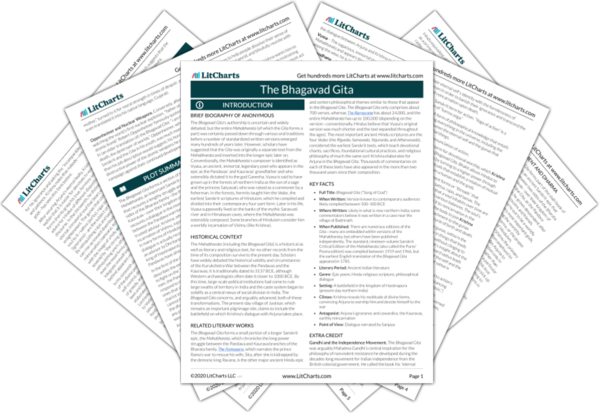Vyasa, the grandfather of both sides and the legendary composer of the
Mahabharata, blessed Sanjaya with the power to see everything that transpired on the battlefield or “field of dharma,” a phrase that immediately establishes dharma as a central motif in the text. At this point in the
Mahabharata, the Pandavas have already defeated the Kauravas, but the reader only learns about the war’s events through the frame story of Sanjaya recounting the tale to the blind Dhritarashtra, who rejected the gift of sight because he did not want to watch the other side of his family (the Pandavas) get slaughtered. The king’s despair over the conflict within his family evokes the tension between familial and political obligations that later shatters Arjuna’s moral compass, but that Bishma seems to have overcome by picking a side.
